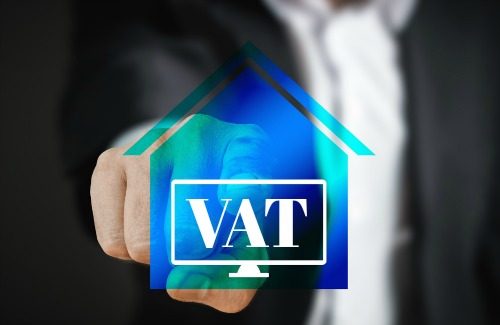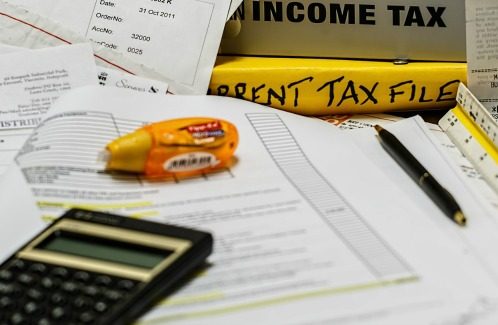 It seems only yesterday that one of my clients called me in a panic, having received a letter from HM Customs & Excise introducing a new online VAT system and a date for their business to be live. Following this, all quarterly VAT returns would be submitted online.
It seems only yesterday that one of my clients called me in a panic, having received a letter from HM Customs & Excise introducing a new online VAT system and a date for their business to be live. Following this, all quarterly VAT returns would be submitted online.
Nobody wanted change.
Nobody wanted to climb a huge mountain to comply with the Government legislation.
Accounts staff were afraid, uncertain and thought this was another “big brother” placing even greater emphasis and burden on business owners.
In practice, it was a lot of worry for nothing.
The business received a unique user number and password to enter the Government Gateway website. Once entered and saved on the website, with a password change of course, the process was no different to filling out the paper-based version of the VAT return. Once submitted, the business received a confirmation email. This confirmed the VAT return had been received, so more no more VAT returns would be “lost” in the post.
Fast forward to today and it’s a fast, simple process to submit a VAT return online. Follow the screen to the latest return, input the figures from your VAT Summary and press the “send” button. Additionally, there isn’t the panic to ensure the VAT form has been posted in the brown envelope provided, which always needed a stamp and nobody had one! Oh, the stress at the end of the month, ensuring the VAT return and accompanying cheque was posted on time. Nowadays, my client logs onto HM Gov website, enter their user details, completes the form and submits. It takes minutes. Within seven days they make a payment for VAT via their bank account. It’s so simple!
The Government has recently announced a time table to “make tax digital” for businesses of all sizes. A high percentage of business accounts are now completed using a software package. This may be a stand-alone package on the computer or possibly the latest update to this which is cloud hosted. The VAT return is processed the same way, with the business printing the summary, detailed and overview reports which must be retained. Once the reports are ready, the VAT return is submitted online rather than in the post, so there is nothing to fear or worry about.
Making Tax Digital
To be fair, it was obvious that once the system proved to be robust for the larger businesses to use, it was only a matter of time before the Government would roll out the ‘Making Tax Digital‘ process to all businesses, and this is what is now proposed.
Under the latest directive, all businesses with a turnover above the VAT threshold (currently £85,000), will be required to submit VAT returns online by 2019. The business will be contacted by HM Customs & Excise with a proposed live date, a process which started in Spring this year.
The Government proposes to ensure all tax recording is fully digital within two years and therefore further changes will follow. For many businesses, corporation tax and payroll are already online, following similar procedures through the Government Gateway website. Not only does it make sense, but it is so easy and such a time saver.
A small business that trades under the VAT threshold will not be required to complete digital tax returns until 2020. Whilst further information is required from the Government, all businesses will be required to comply when the live date is announced. This is a service your accountants already offer, and is no different from the paper-based tax returns they complete for you and many small businesses today. The accountants will retain the accounts and tax computations, and simply key in the data at the appropriate time.
Is there anything to fear from making tax digital?
The big issue may revolve around errors on VAT which require commentary and manual adjustment. You may continue to make changes to your paper-based VAT summary and then key in the adjusted figures with your online submission. In essence, there is no difference. You must justify the amendments you make.
Perhaps the fear was that this would affect cash flow. Business owners knew that submitting the paper-based VAT return with accompanying cheque bought them a little time before the cheque would be processed and debited to their bank account. But, with online banking used so often these days, the business loses a few days as the funds are transferred and debited from the account immediately. It’s also important to remember that the payment must reach HM Customs & Excise within seven days from the VAT return due date. A business struggling to pay will have the time to submit their online return and contact VAT help for time to pay.
Whilst some accounting-based software has the option to link from the software package directly online, it is not a requirement that the two interface.
 All businesses are required to retain paper-based copies of their VAT return for inspection and therefore the option to make amendments is still valid and should remain so, especially for those one-off, out of the ordinary events that may require deeper explanation. Whether it will eventually become a requirement is unclear, as accounting software does not retain complete versions of VAT returns including each transaction.
All businesses are required to retain paper-based copies of their VAT return for inspection and therefore the option to make amendments is still valid and should remain so, especially for those one-off, out of the ordinary events that may require deeper explanation. Whether it will eventually become a requirement is unclear, as accounting software does not retain complete versions of VAT returns including each transaction.
If your business still relies on the old bookkeeping, double entry system, then you will still be required to submit your accounts online. Perhaps it could be a good investment to update the business and purchase a software package, although not essential.
[bctt tweet=”Making Tax And VAT Digital For Small Businesses – Are You Ready To Embrace The Change?” username=”yellbusiness”]
By the end of 2019, all VAT registered businesses will be required to complete VAT returns online. It’s a simple process and merely a matter of understanding the Government’s Gateway website. Having done it once, you will find the online VAT process easy. Expect to receive your Gateway unique number and a separate letter with your password. This is usually sent in two halves. You will be required to visit the Government Gateway website to register your business. Once done, you have the option to change your password which is recommended, and then your business is ready to submit your next VAT return online.
Are you ready to embrace the change?





